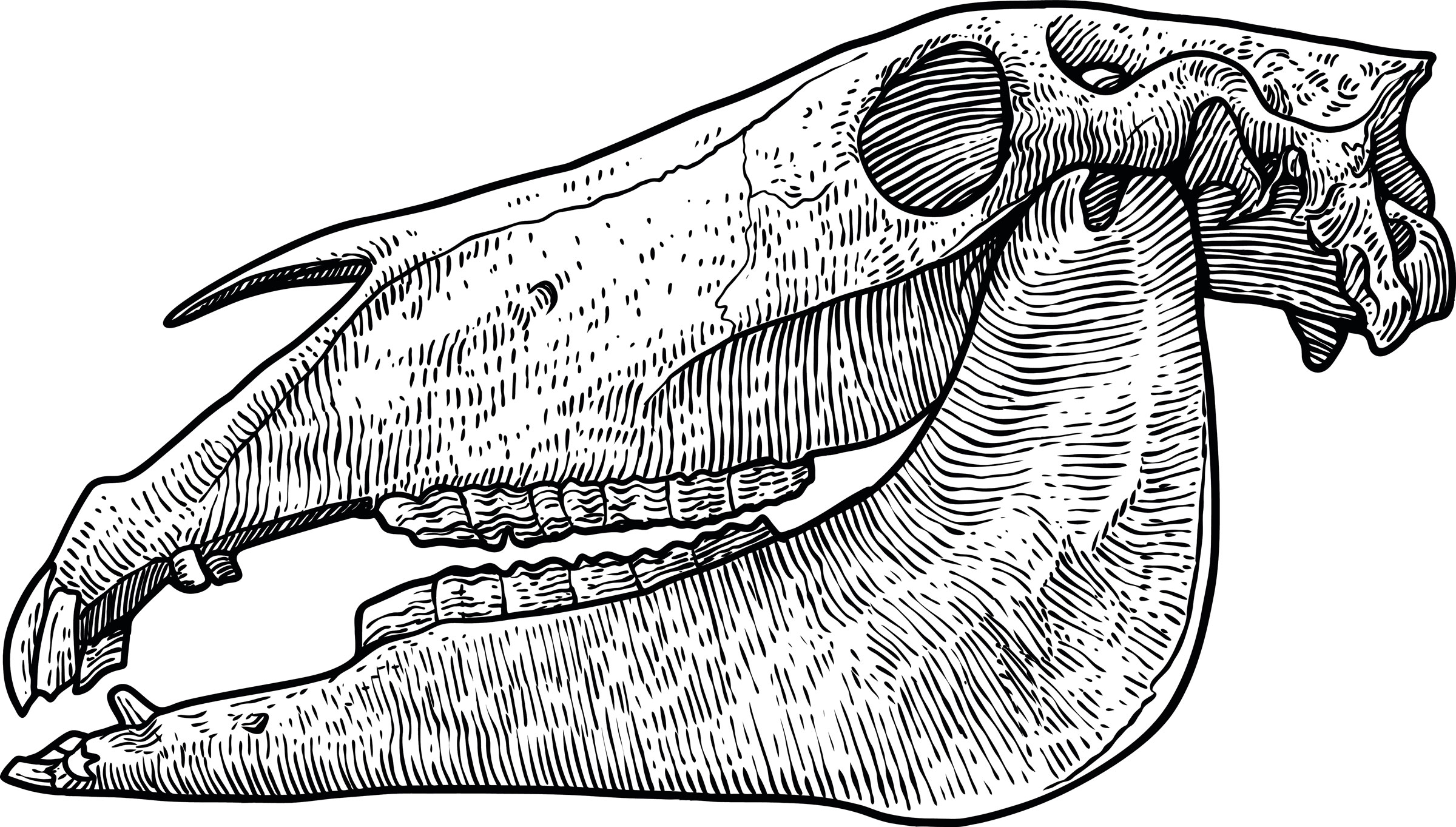
This study examined cheek teeth affected by periperhal caries (PC) histologically and ultrastructurally in order to try and establish the route of cariogenic bacterial invasion and to describe the resulting pathological changes. Authors of this study were Borkent, D.; Smith, S.; and Dixon, P.M.
A total of 16 cheek teeth from horses that had died of non‐dental related disease with varying grades of PC were examined alongside four control teeth (no PC). The teeth were macroscopically assessed.
Of those with PC, 11 had partial cemental caries (grade 1.1 PC), three had total cemental caries (grade 1.2 PC), three had caries of cementum and the underlying enamel (grade 2 PC) and two had caries of cementum, enamel and dentine (grade 3 PC). Samples for histological and electron microscopy examination were prepared.
Bacteria from plaque entered the peripheral cementum perpendicular to the sides of the teeth alongside Sharpey’s fibers or vascular channels or more horizontally alongside exposed intrinsic fibers and cemental growth lines. Intra‐cemental bacterial spread caused varying patterns of cemental caries as identified histologically: horizontal flake‐like lesions (Type A), vertical flake-like lesions (Type B), flask‐like lesions (Type C) and small ellipsoid, lytic lesions (Type D).
Regardless of mechanism, cariogenic bacteria commonly tracked along the intrinsic fibers in lines of arrested growth (LAGs), causing further demineralization of adjacent cementum and disintegration of these fibers. Cemental caries progressed to affect enamel, dentine and pulp.
Bottom line: Equine peripheral caries cause different patterns of cemental lesions, which might be dependent on the route of bacterial invasion. Gross examination can underestimate the true extent of peripheral caries.
To gain access to this research please visit Wiley’s online library.








